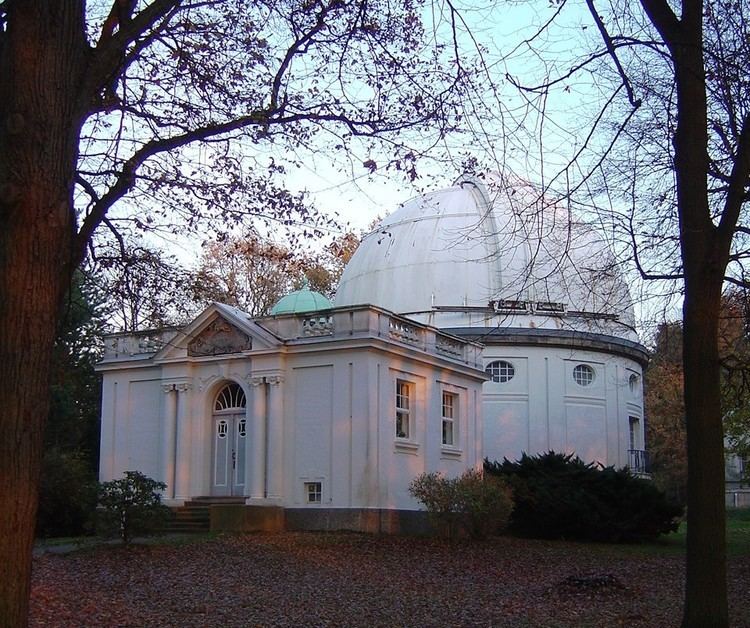Established 1909 (1802) Phone +49 40 428388512 | Website www.hs.uni-hamburg.de Founded 1802 Code 029 | |
 | ||
Hours Open today · 12–2PMWednesday12–2PMThursday12–2PMFriday12–2PMSaturday10AM–6PMSunday10AM–6PMMondayClosedTuesdayClosed Similar Calar Alto Observatory, Karl Schwarzschild Observatory, European Southern Observatory, Hamburg Planetarium, Leibniz Institute for Astrophys | ||
Hamburg Observatory (German: Hamburger Sternwarte) is an astronomical observatory located in the Bergedorf borough of the city of Hamburg in northern Germany. It is owned and operated by the University of Hamburg, Germany since 1968, although it was founded in 1825 by the City of Hamburg and moved to its present location in 1912. It has operated telescopes at Bergedorf, at two previous locations in Hamburg, at other observatories around the world, and it has also supported space missions.
Contents
Stintfang (1802–1811)
The precursor of Hamburg Observatory was a private observatory by Johann Georg Repsold built in 1802, originally located at the Stintfang in Hamburg. It started in 1803 with a meridian circle built by Repsold in 1808. However, it was destroyed in 1811 by a war. Repsold, Reinke, and J.C. von Hess submitted a proposal to Hamburg for city observatory that same year, to rebuild.
Millerntor (1825–1906)
Funding for a new Observatory was approved in August 1821, on the condition J. G. Repsold built the instruments. The new observatory was completed in 1825 next to the Millerntor. However, in 1830 Repsold died while fighting a fire (he was also a Hamburg fireman) and the City of Hamburg voted to take over and continue running the observatory in 1833. First director became Charles Rümker who har accompanied Thomas Brisbane to build the first Australian observatory at Parramatta. Christian August Friedrich Peters became assistant director in 1834. In 1856 Rümker's son George became director of the observatory.
In 1876 funding was received for 'The Equatorial', a 27 cm (10.6 inch) refractor; it was later moved to Bergedorf.
After the move to Bergedorf, the site was partially demolished and rebuilt into the Museum of Hamburg History (Hamburgmuseum / Museum für Hamburgische Geschichte).
Bergedorf (1912–present)
Because of the increasing light pollution, in 1906 it was decided to move the observatory to Bergedorf. In 1909 the first instruments were moved there, and in 1912 the new observatory was officially dedicated.
The European Southern Observatory (ESO) was founded at Bergedorf in 1962.
The Hamburg 1m Reflector (39 in/100 cm objective aperture) was the world's fourth largest reflector when it began operations in 1911. Catalogs include the AGK3-Sternkatalog (completed over 1956-1964)
In 1968 the observatory became part of Hamburg University. In 1979 a small museum to Bernard Schmidt was inaugurated. In 2012, 100 years at Bergedorf was celebrated.
Telescopes
Offsite telescopes
People of Hamburg Observatory
Directors of the Observatory:
Bernhard Schmidt, inventor of the Schmidt camera worked at the Observatory including making telescopes, instruments, and observations starting in 1916. Walter Baade successfully petitioned the Hamburg senate to have Schmidt camera installed in 1937, and it was completed in 1954 after work restarted on in 1951 after being interrupted by WWII. Walter Baade also succeeded in having a Schmidt camera built at Palomar Observatory in California.
In 1928, Kasimir Graf made many observations at Hamburg until he left for the Vienna Observatory.
